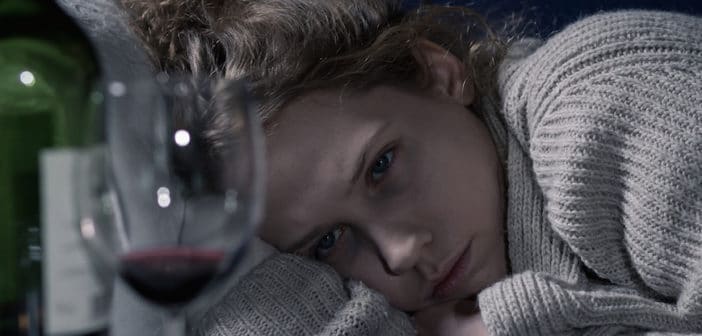 A&E struck gold back in 2005 when they launched Intervention, a docu-style series following alcoholics and drug addicts (and some struggling with other disorders) from what we hope is their bottom through a staged intervention and, if all goes well, off to treatment. Though briefly canceled in 2013, the show was (thankfully) revived just a year later and has now officially entered its 15th season. The third episode aired Sunday, March 20.
A&E struck gold back in 2005 when they launched Intervention, a docu-style series following alcoholics and drug addicts (and some struggling with other disorders) from what we hope is their bottom through a staged intervention and, if all goes well, off to treatment. Though briefly canceled in 2013, the show was (thankfully) revived just a year later and has now officially entered its 15th season. The third episode aired Sunday, March 20.
This is Kacy
At this point, I think it is safe to say that you not only have to have a severe alcohol and drug problem to qualify for Intervention, but you also need to have a strong Hollywood “Wow” factor to be chosen for this season. And it’s getting competitive, people. Episode three focuses on Kacy, a once fierce and successful hotel owner who is now confined to her couch. The 39-year old mother of two spends her days at home, in mismatched pajamas that she often doesn’t change for weeks at a time, chugging a combination of PowerAde and gut-rot vodka. Her days seem to be broken up by visits from her daughter, her daughter’s girlfriend, an enabler friend who brings her booze and occasionally her 16-year old son, Gabe. The only time you see Kacy get up from the couch is to walk to the store (in her pajamas) to get more alcohol.
What It Was Like
By the time she was 22 years old, Kacy was married with a child and had just purchased her first hotel. Though her husband left her and her 18-month old daughter, Lexi, shortly thereafter, single motherhood didn’t deter Kacy from success. She went on to make millions of dollars in commercial real estate, remarry and have two more children. But life wasn’t done throwing her curve balls. Though Kacy proved to be a tough businesswoman, an unimaginable tragedy brought the young entrepreneur to her knees.
What Happened
I imagine it must be very hard for non-addicts to understand how the lives of once promising individuals could spiral so out of control. That is why each episode of Intervention makes sure to point to at least one incident in the addict’s life that could possibly explain their destructive behavior (even though those of us who struggle with addiction know there isn’t necessarily a “reason”). For Kacy, her pain lies in the loss of her youngest child, Dakota, who was just months old when he died of SIDS. Kacy believes that she is somehow responsible for his death and seems to be using that as an excuse to drink. But as veteran interventionist Candy Finnegan points out later in the episode, that is all that it is: an excuse.
So after falling into a deep depression fueled by alcohol, Kacy lost her marriage, her home, her businesses and custody of her kids. Logically, this domino effect of consequences from drinking should be reason enough for her to stop—or at least get help—but ironically, these are often just the sort of unfortunate events that convince the diseased mind of an alcoholic that they are a victim and give them permission to drink more.
What It’s Like Now
While not yet 40 years old, Kacy looks like a bag lady whose lifestyle choices have aged her well beyond her years. Her blotchy and weathered skin is accompanied by a mass of ratty hair that hasn’t seen the teeth of a comb since Mad Men aired their final episode. And speaking of teeth, confessionals from Kacy’s friends and family reveal that she may not be attending to hers much at all. One friend speculated that it had been weeks since she brushed her teeth but considering the fact that many commented on Kacy’s permeating odor, my guess is that is being generous. In summary, the woman is not in good shape.
Just days before the intervention is scheduled to take place, Kacy’s parents pay her a visit to find her not feeling well (I assume that means worse than usual). Her belly is distended and she admits that her bowels movements are white in color (not sure how she is even having them since she isn’t eating). According to her father, who clearly did the token WebMD search, this is a sign of liver failure so they call an ambulance and have Kacy rushed to the hospital.
This kind of seems like a big deal, for a second, but the drama is soon diffused when her parents tell the cameras that this is merely one of countless times Kacy has been hospitalized as a result of her drinking. They appear to have the attitude that is unique to the loved ones of longtime addicts: no surprises, no expectations. But they haven’t lost hope that their daughter can recover. “This intervention cannot come fast enough,” her mother says.
Approaching Bottom
Kacy returns from the hospital strategizing for her next drink. She calls Lexi and her girlfriend in a panic and they come over to make sure she is okay. But when Kacy starts asking to be driven to the liquor store, Lexi realizes that Mom’s panic was merely a result of being out of booze. They make her some ravioli and leave.
Desperate, Kacy scrapes up $3 and walks to the store alone in the dark. When she arrives, she’s told she doesn’t have enough to buy alcohol so she starts asking people in the parking lot for money. She even approaches a family with two children and asks them for $5. When the little boy asks what she needs it for, she tells him: “I need to go get alcohol, that’s true.” Oh don’t worry, Kacy, I’m certain he believes you.
In the end, she arrives home with a few nips of whisky, which she doesn’t like, but drinks anyway.
The Pre-Intervention
Candy Finnegan sits down with Kacy’s family and friends and reminds them why they are there: “One of the most important parts of an intervention is that it doesn’t work—at all—if you don’t have consequences.”
And she’s right. People may think the intervention process the answer to all their problems—that as soon as someone gets help, everything will be fine. But that is only true in the best cases. Many times this is only a first step in a long journey toward recovery and the success of an intervention is largely dependent on the people involved sticking to their bottom lines. But Candy assures everyone that there is still hope. “I don’t care if she has been to treatment 38,000 times,” she says, “she has never worked on herself.”
The Intervention
The morning of Kacy’s “final interview,” her mom comes to pick her up and spends some time detangling her hair. When Kacy arrives at the interview location to find a room full of her closest friends and family, she doesn’t seem surprised. So either she is too out of it to understand what is going on or was well aware that this day was coming.
Everyone in Kacy’s life that we have met so far is there, except one person: her son, Gabe. According to his dad, Gabe didn’t want to be a part of the intervention. He isn’t ready to confront his mother’s alcoholism. However, he does write a letter that his dad ends up reading aloud.
Though perhaps expecting the intervention, Kacy seems panicked by the situation nonetheless. “How long is this going to take?” she asks Candy. After the first letter, read by her mom, Kacy starts searching her jacket pockets for vodka.
Several more family members read their pleas, including Lexi, who lists the ways in which their relationship will change if her mom doesn’t accept the help that is being offered her.
At first, Kacy seems resistant. “I don’t want to have to leave my kids,” she says. But Candy is prepared to squash the standard addict excuses. “They are without you anyway,” she reminds her. This is the point in which Kacy seems to get it. “So it’s pretty horrifying at this point,” she says. Um, that’s an understatement. It’s amazing how unaware people can be when they are trapped inside their disease. Kacy eventually agrees to go to treatment. “I will do whatever I have to do to get over this. This is…this is fight style.”
On the way to the airport, Kacy chugs her nips and thinks about the future. “We are going to go on the plan and not going to have a drink? This is not going to be a fun ride.” We feel your pain, Kacy. But no one ever said the flight to rehab was going to be fun.
76 Days Later
When Lexi comes to visit, we see Kacy for the first time in over two months and it’s immediately clear that her time at The Discovery House in Reseda, California has been transformative. She is bright-eyed, put together and happy to be sober. She thanks her daughter for helping her get into treatment and Lexi, in turn, thanks her mom for agreeing to do the work. Kacy then tells the camera how sobriety is different for her this time around; that she has made a connection between her heart and her head and she is excited about the future. She plans to “fiercely” get back into real estate. Kacy and Lexi take a selfie.
But as many of us know, the road to hell is often paved with good intentions and just two days after her release from treatment, Kacy relapses. However, she is currently hospitalized and has been sober since February 16, 2016.
Sponsored DISCLAIMER: This is a paid advertisement for California Behavioral Health, LLC, a CA licensed substance abuse treatment provider and not a service provided by The Fix. Calls to this number are answered by CBH, free and without obligation to the consumer. No one who answers the call receives a fee based upon the consumer’s choice to enter treatment. For additional info on other treatment providers and options visit www.samhsa.gov.




